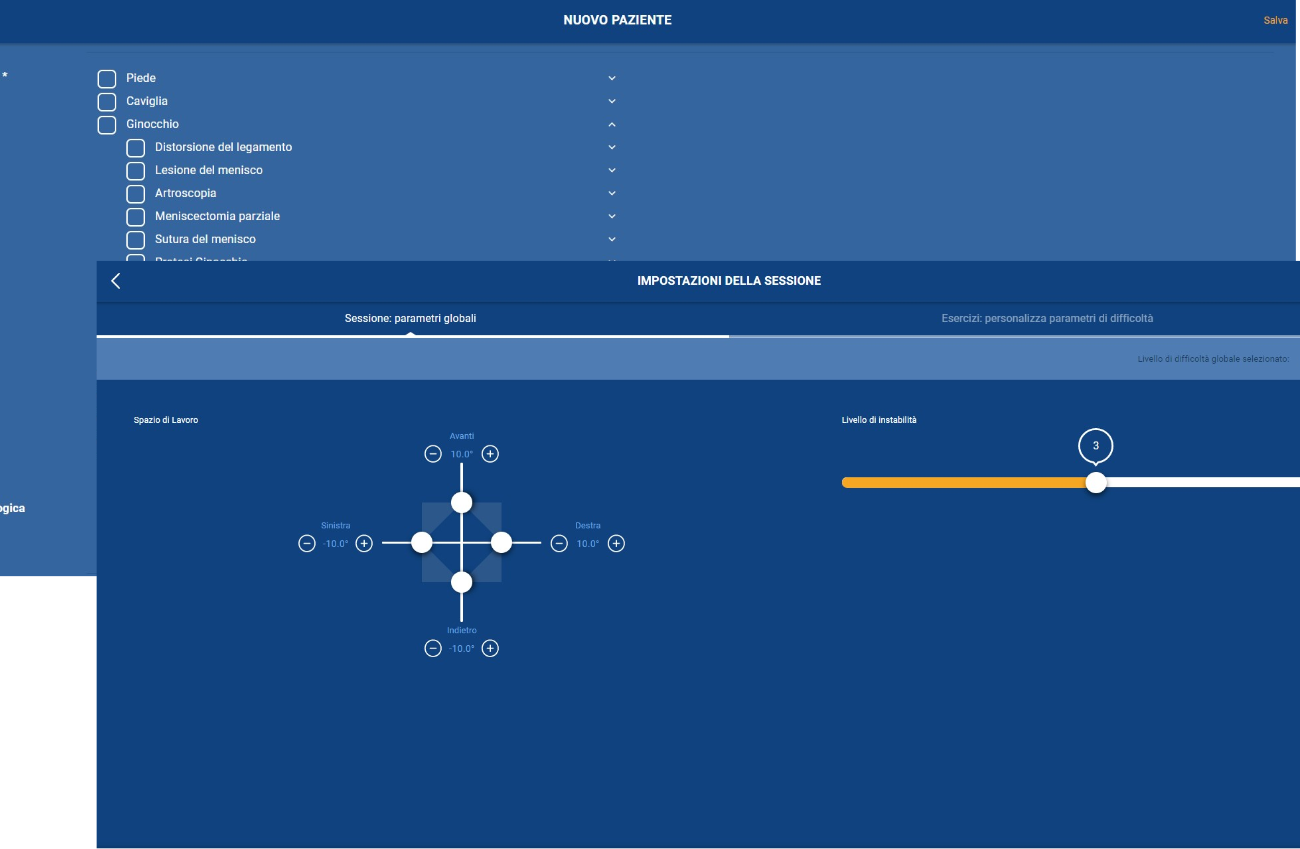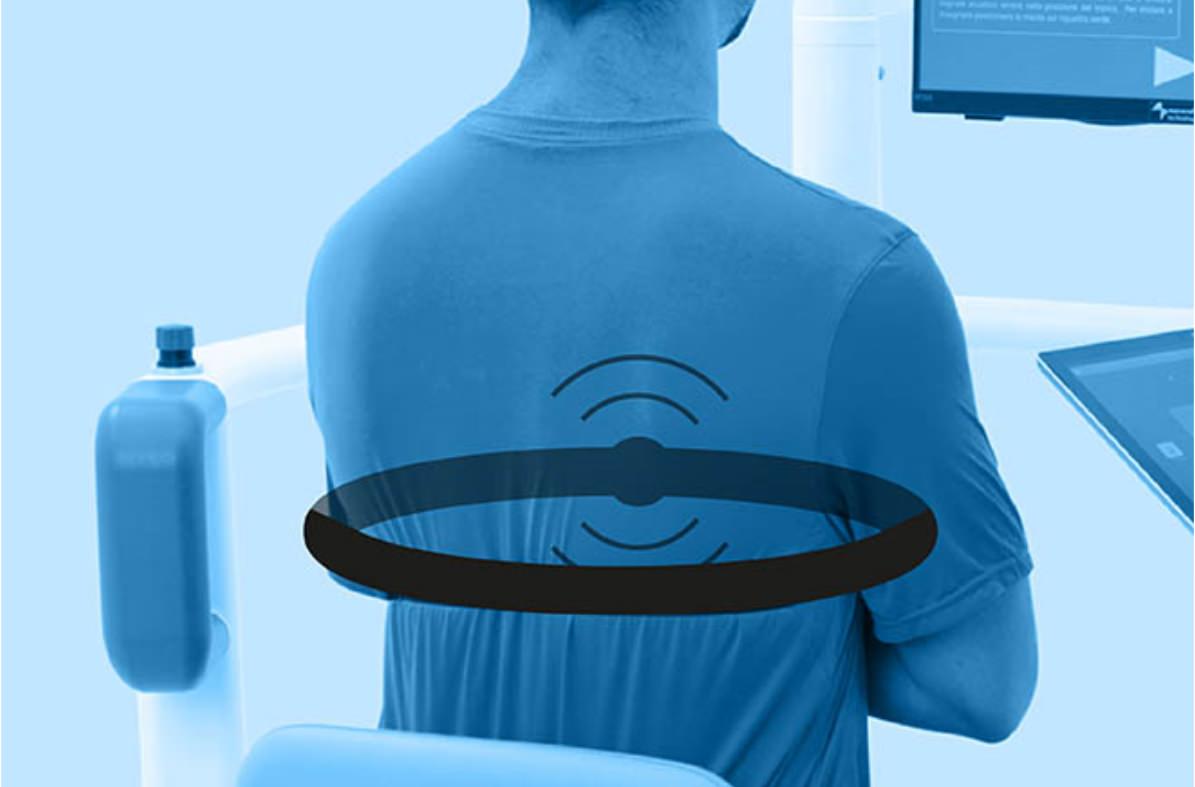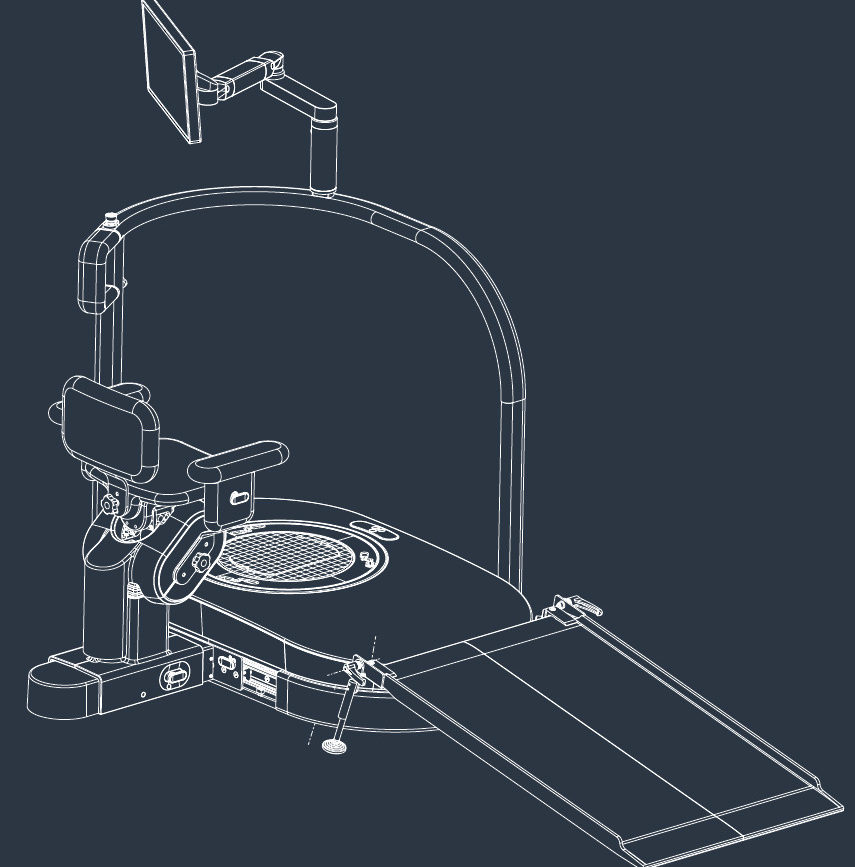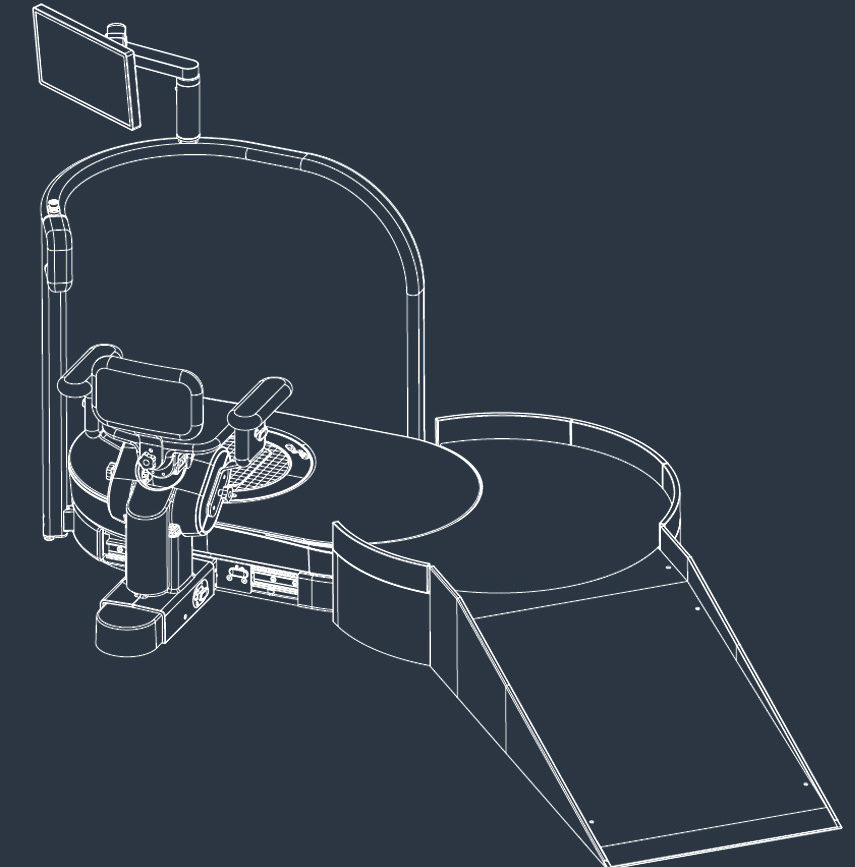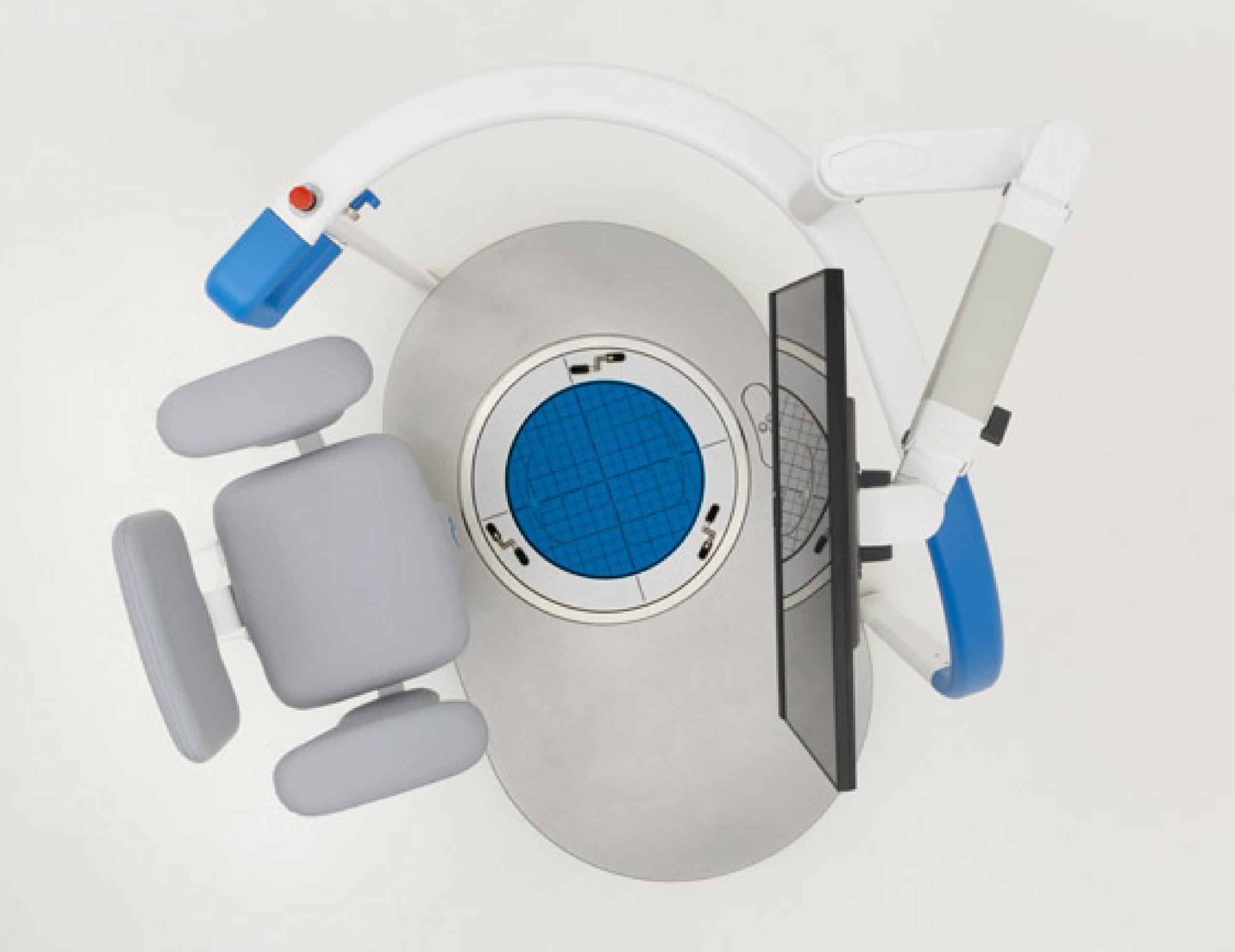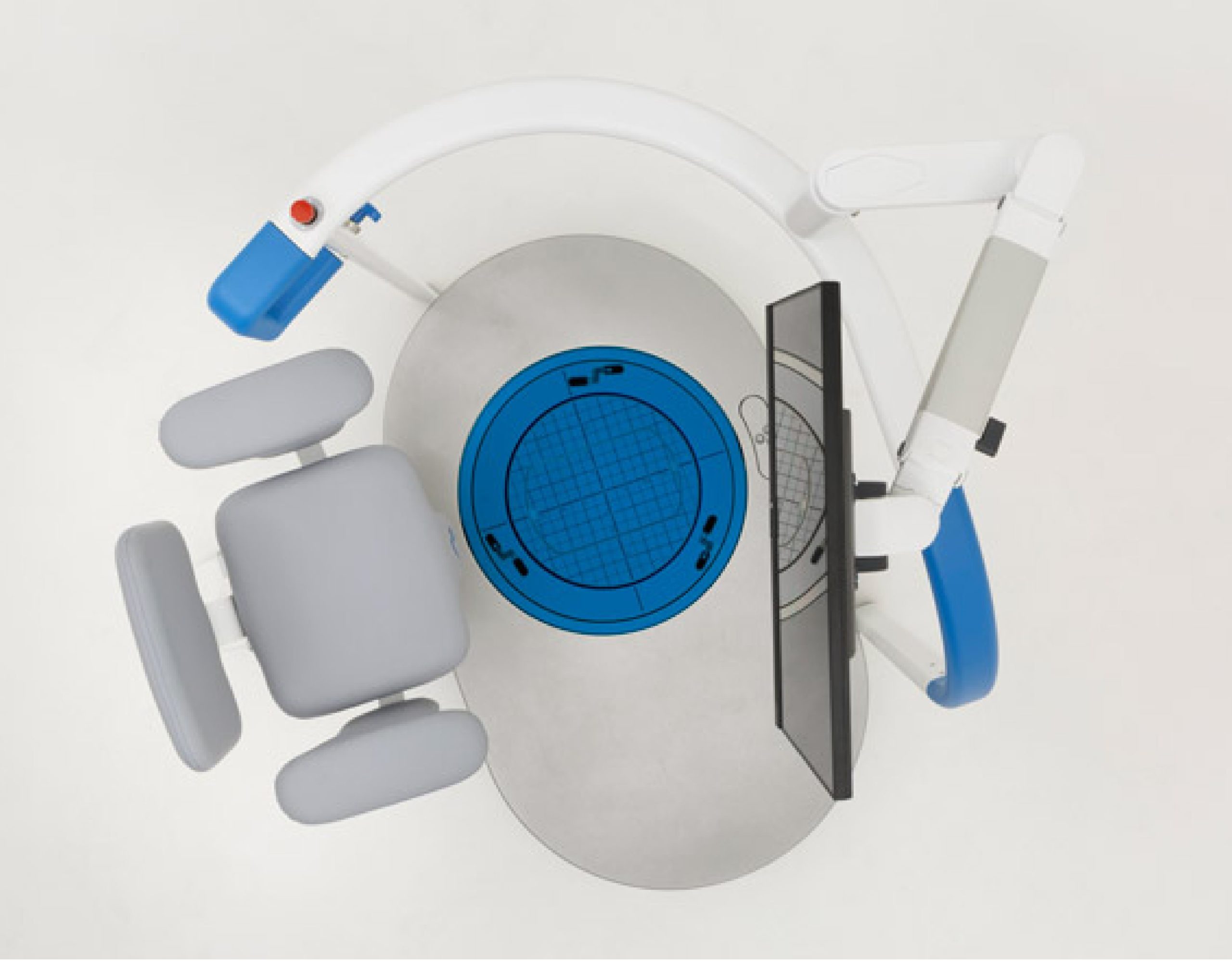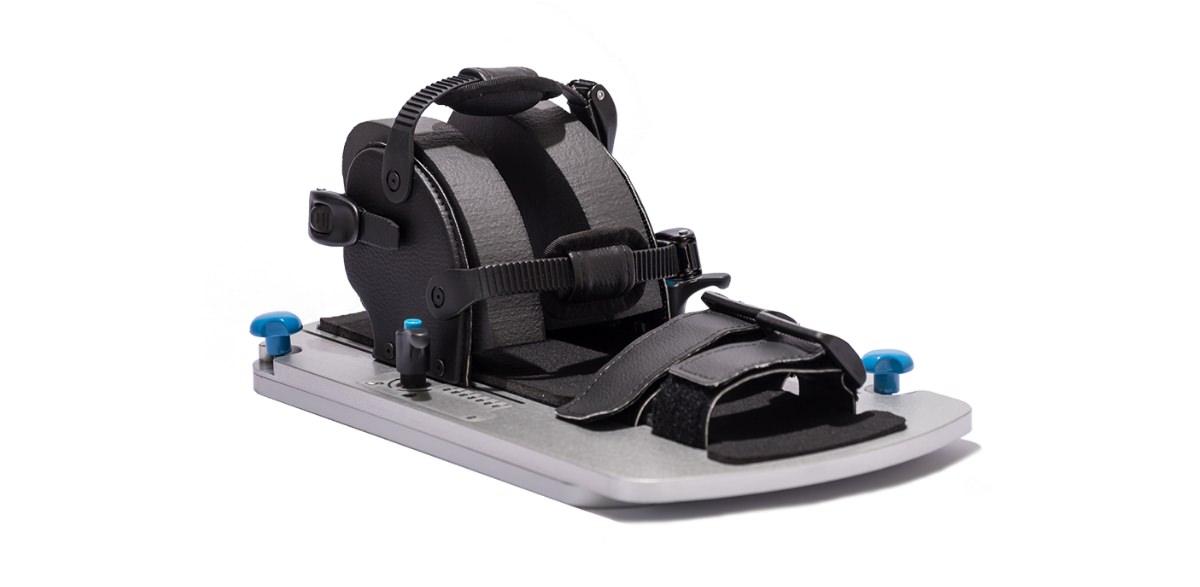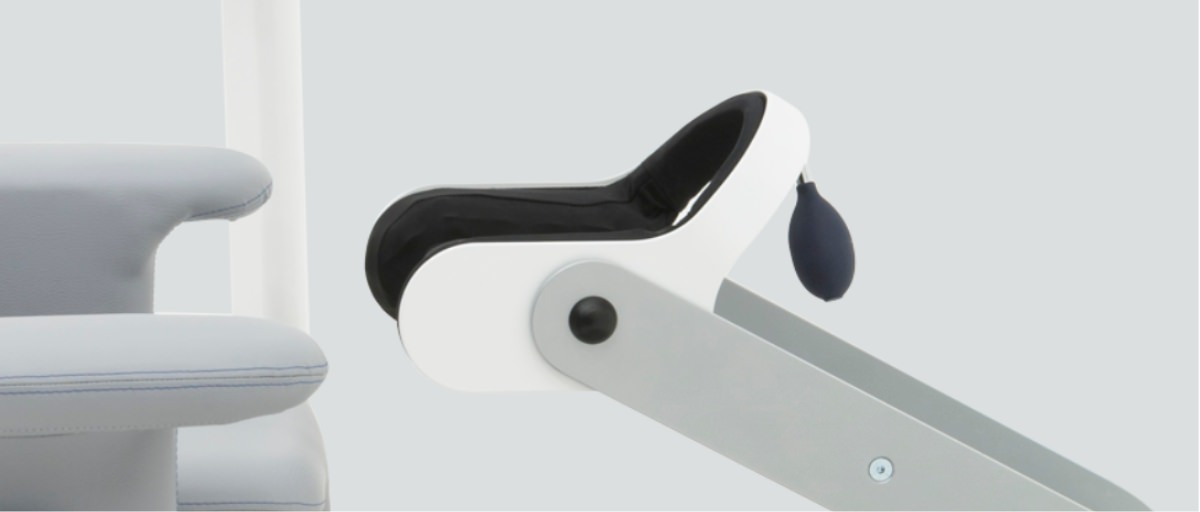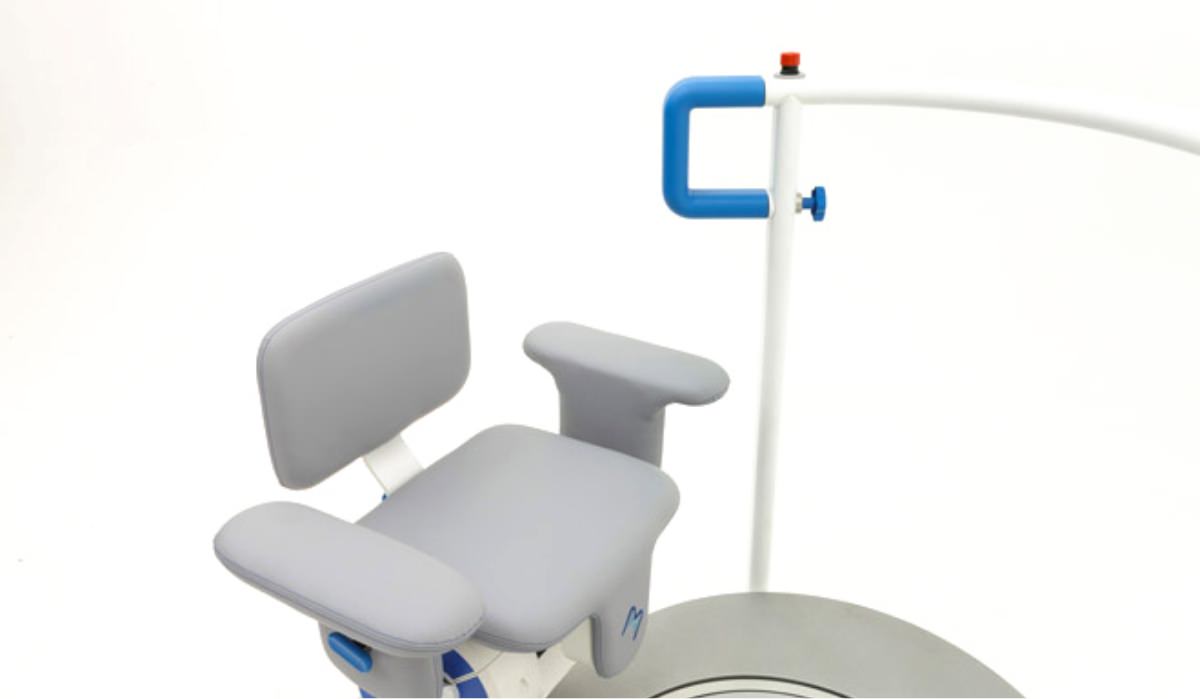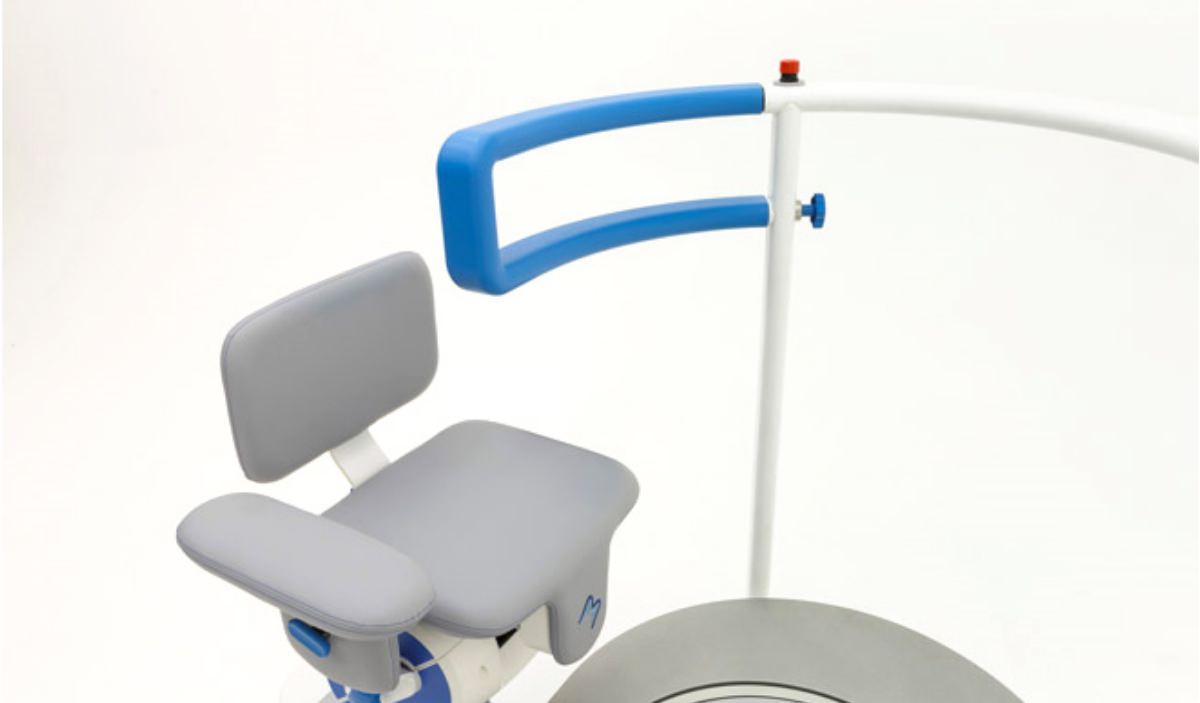Product technical data
General specifications
- Dimensions: 59 x 62 x 80 inches (150 x 160 x 205 cm)
- Net weight: 639 lbs (290 Kg)
- Maximum patient weight : 331 lbs (150 Kg)
Electrical specifications
- Maximum input power:
- 1400 VA (for SN>=190)
- Power supply voltage: 115/230 Vac.
- Nominal frequency: 50/60 Hz.
Platform movement
- Maximum angular speed: 180 °/s.
- Maximum inclination of bipodalic platform in all directions: ±18°
- Maximum inclination of monopodalic platform in ankle configuration (sitting):
- Plantar flexion/extension: ±30°;
- External flexion/extension: ±18°;
- Maximum inclination of monopodalic platform in standing position:
- Plantar flexion/extension: ±18°;
- External flexion/extension: ±18°;
- Maximum robotic seat inclination:
- Sagittal plane: ±13°;
- Frontal plane: ±13°
Mechanical specifications
- Maximum transmissible torque, seat and platform: 200 Nm.
Batteries
- Inertial sensor battery APC0000001
- Power supply voltage and capacity: 3,7 Vdc 500mAh
Environmental constraints
- Operating temperature: 50° F (10° C) to 86° F (30° C)
- Storage temperature: 50° F (-20° C) to 86° F (70° C)
- Ambient relative humidity: 30 to 75% non-condensing
- Atmospheric pressure: No effect
- Altitude: Maximum 6561 ft (2000 m)

